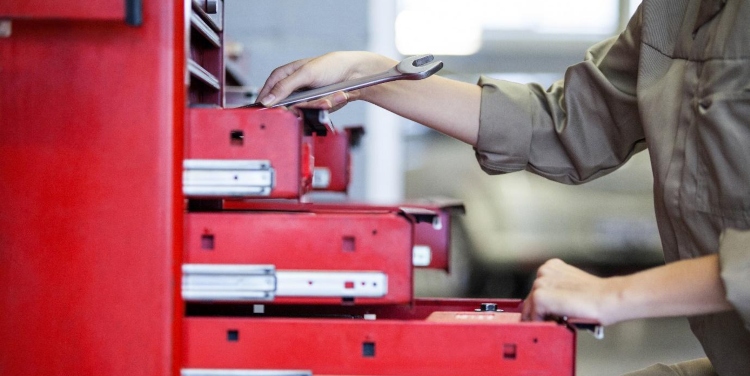As a property owner, maintaining a well-kept home or investment property requires more than just an eye for design and regular upkeep. It also involves having the right tools on hand for repairs, renovations, and everyday maintenance. However, tools can easily become lost, damaged, or disorganised if they’re not properly stored. This is where investing in a tool chest becomes invaluable. Not only does a tool chest help to keep your tools safe, but it also ensures that your home remains tidy and organised. In this article, we explore the benefits of using tool chests and offer practical tips on selecting the right storage solution for your property.
Why Tool Chests are Essential for Property Owners
Property owners, whether residing in a flat, house, or managing multiple rental properties, often need a variety of tools to handle DIY projects, maintenance, and repairs. Items such as hammers, screwdrivers, drills, wrenches, and saws are not only essential for property maintenance, but they can also be expensive and difficult to replace. Having a designated storage system like tool chests ensures that your tools are easily accessible, well-organised, and protected from damage or theft.
A high-quality tool chest also helps to reduce the risk of accidents. Sharp or heavy tools left lying around can cause injuries or create unnecessary clutter in your home. With a dedicated chest, you can store everything safely, reducing the chances of tripping hazards or damaging surfaces. Whether you use your tools regularly or just need them for the occasional fix, a tool chest is a wise investment that will pay dividends in both safety and convenience.
Key Features to Look for When Choosing a Tool Chest
When selecting a tool chest, the features you prioritise will depend on the type of property you own and how frequently you use your tools. Below are some important factors to consider:
Security and Locking Mechanisms
If you’re storing valuable tools in your workshop or garage, it’s essential to choose a tool chest with solid security features. Look for models that include lockable drawers or heavy-duty locks to prevent theft. Many premium tool chests come with keyed locks or digital locks, offering additional security. For property owners managing rental properties or working on construction sites, a secure tool chest is a must to ensure that expensive equipment is protected from unauthorised access.
Durability and Material
The material of the tool chest is key to its longevity and ability to withstand everyday use. Opt for tool chests made from high-quality steel, stainless steel, or powder-coated metal to ensure they are strong, rust-resistant, and capable of handling the weight of heavy tools. For those with more traditional tastes, some tool chests are available with solid wood veneers, adding an aesthetic touch, though these are generally less durable in high-moisture environments such as garages.
If you live in an area with high humidity or extreme weather, consider a waterproof or weatherproof tool chest to prevent rusting and corrosion.
Storage Capacity and Organisational Options
Tool chests come in various sizes and configurations, so it’s important to choose one that suits your storage needs. If you have a large collection of tools or require space for specific items, a tool chest with multiple drawers and compartments will help keep everything organised. Look for chests with adjustable dividers to tailor the storage space to fit your tools. Some high-end tool chests even feature integrated organisers for screws, nails, and small parts, keeping these items in order and easy to access.
Choosing the Right Tool Chest for Your Property
The type of property you own and the space available will influence your choice of tool chest. Here are some recommendations for different property types:
For Apartments or Flats
If you live in a flat or apartment, space is likely to be limited, and storing tools in a dedicated workshop may not be practical. In this case, look for a compact tool chest that can be easily stored in a closet, utility room, or under a workbench. Many modern tool chests are designed with space efficiency in mind, so you don’t have to compromise on storage capacity for size. Opt for a modular tool chest that can be stacked or moved around with ease.
For Detached Houses
Homeowners with larger spaces, such as garages or sheds, may benefit from a larger tool chest with more compartments for a wider variety of tools. If you frequently carry out home improvement or renovation projects, a rolling tool chest or tool cabinet with multiple drawers and work surfaces will be ideal. These allow you to organise tools, store additional supplies, and even have a small workspace for ongoing tasks.
For Property Investors or Commercial Property Owners
For those managing rental properties or commercial spaces, durability and security are essential. Choose a heavy-duty tool chest with lockable drawers and multiple levels of organisation. Depending on the scale of your work, you may also want a tool chest on wheels, making it easier to move tools between different properties or job sites. A large industrial-grade chest will ensure your investment is well protected for years to come.
For property owners, keeping tools safe, organised, and easily accessible is essential for efficient property maintenance and DIY projects. A high-quality tool chest provides a practical solution for storing tools while also protecting your investment from damage or loss. Whether you’re undertaking simple repairs or larger renovation tasks, selecting the right tool chest will help maintain a tidy and secure workspace. When choosing a tool chest, consider key factors such as security, durability, storage capacity, and how the chest fits into your available space to ensure you make the best choice for your home or investment property.
David Prior
David Prior is the editor of Today News, responsible for the overall editorial strategy. He is an NCTJ-qualified journalist with over 20 years’ experience, and is also editor of the award-winning hyperlocal news title Altrincham Today. His LinkedIn profile is here.











































































